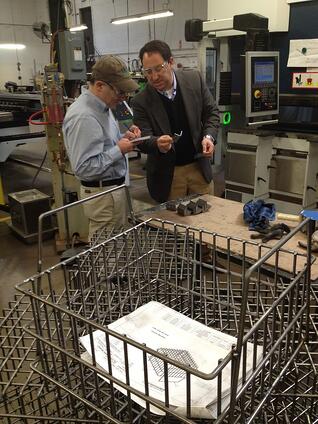 Do you want to manufacture your products faster and more efficiently, cutting costs while boosting productivity? For any manufacturer, the answer should always be “YES!”
Do you want to manufacture your products faster and more efficiently, cutting costs while boosting productivity? For any manufacturer, the answer should always be “YES!”
Even major automotive parts manufacturers want to make parts faster while cutting costs. After all, the more you can make and the less you have to spend on making it, the better your company’s profits will be at the end of the day.
Despite this, many manufacturers wind up spending far too much money on reworking parts over and over. Worse yet, having to reprocess parts multiple times slows down the finishing process, limiting the number of products that could be completed and shipped out each day. Combined, these two inefficiencies in a given parts washing process can really cut into a company’s profits.
One leading automotive parts manufacturer was experiencing considerable trouble with their parts washing process. Not only were parts needing multiple washes to get clean, they were also getting damaged during the wash, with debris sometimes being re-deposited onto the parts being cleaned.
This manufacturer came to Marlin Steel for help creating a new, more effective parts washing basket for their parts cleaning process. Here’s how Marlin Steel found the solution to the problem and helped the automotive parts manufacturer cut costs and improve productivity:
Step 1: Assessing the Issue
Marlin Steel’s team of engineers started by learning about the customer’s particular cleaning process, which involved the use of ultrasonic vibrations to clean parts.
During the ultrasonic cleaning cycle, parts were bumping into each other, causing them to get chipped or scratched. Since parts needed to be in pristine condition, this meant that the parts needed to be re-finished or scrapped over and over again.
Additionally, the debris that was coming off of the parts was not leaving the basket because there was insufficient open space. This meant that debris would remain in the basket and could wind up getting stuck to the sides of the parts being cleaned once more.
After learning the details of the customer’s problem and their particular wash process and parts, Marlin’s team set to work finding solutions to the problems with the existing basket design.
Step 2: Designing a Better Basket
 Using the details of the customer’s parts cleaning process, including:
Using the details of the customer’s parts cleaning process, including:
- The size and number of parts to be washed in each basket.
- The intensity and the duration of the ultrasonic vibrations.
- The chemical solution that the basket would be immersed in during the wash process.
- Temperature of all wash/finish processes.
Marlin’s engineering team set to work creating a new and improved basket design.
Once finished, the design was vetted using virtual physics simulation software to see if the basket could stand up to the stresses of the customer’s wash process and refined until it passed without flaw.
Once finalized, the design was committed to production using advanced factory automation that could consistently meet the tolerances specified in the design.
The Impact of the Redesign
So, how did the new basket perform?
In a word, splendidly.
By increasing the amount of open space in the basket’s design, the debris that was previously being left in the basket was now able to drain away completely, preventing it from getting re-deposited onto the parts being cleaned.
The use of dividers in the basket helped to keep parts separate so that collisions no longer occurred between parts. This minimized the damage that parts would suffer during the wash process and prevented expensive reworks as well as the wasteful scrapping of parts.
Floor space was saved by making the baskets stackable. This reduced the overall “carrying cost” of the new baskets so that valuable factory floor space could be dedicated to other tasks.
Adding handles to the baskets made them easier to carry for workers, resulting in fewer dropped parts loads and preventing damage from accidents.
Overall, the improved capabilities of the new basket design helped the customer save a ton of money and time by reducing reworks. This also led to an improvement in the customer’s time to market so that they could sell more parts in less time, increasing their overall order capacity. Download the case study below to learn more.


.gif)


